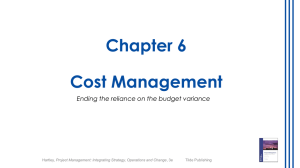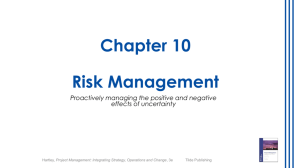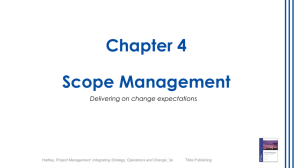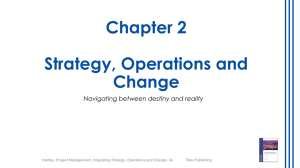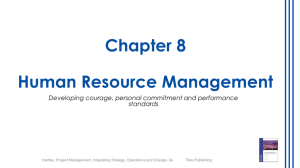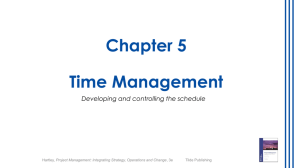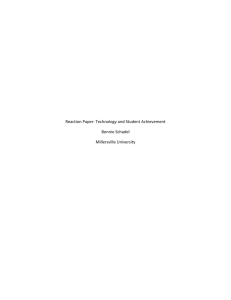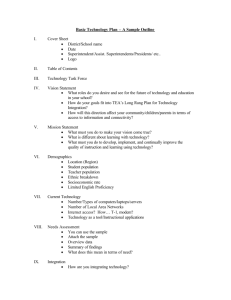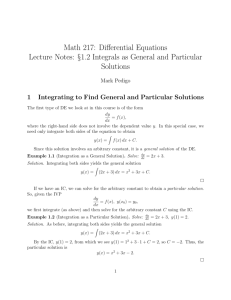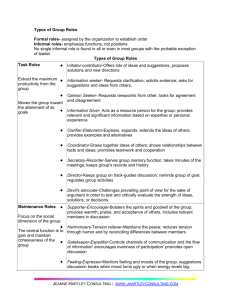Project Management - Tilde Publishing and Distribution
advertisement
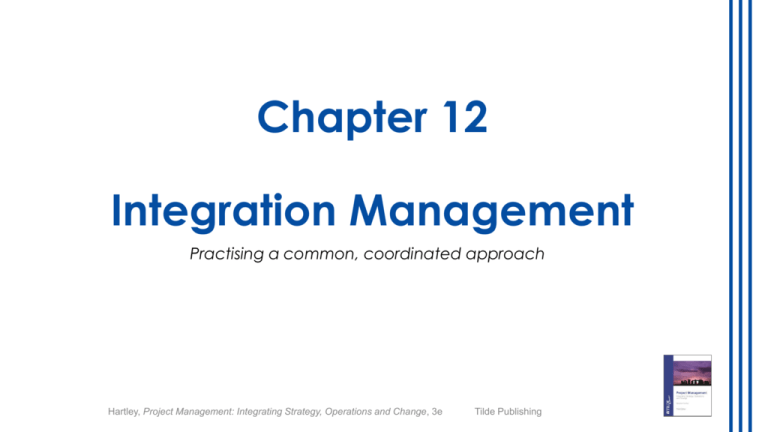
Chapter 12 Integration Management Practising a common, coordinated approach Hartley, Project Management: Integrating Strategy, Operations and Change, 3e Tilde Publishing Chapter overview 1. 2. 3. 4. 5. 6. 7. Developing the project proposal Developing the project management plan Directing and managing the work Monitoring and controlling performance Performing integrated change control Closing down the project Mapping project processes © 2014 Hartley, Project Management: Integrating Strategy, Operations and Change, 3e Tilde Publishing 2 Developing the project proposal confirms the existence of the project itself (as distinct from an operational priority) enables the foundational understanding of the project validates the alignment of the (change) project to the strategic direction of the organisation, while also considering the ongoing operational priorities documents (in broad terms) the organisational need, assumptions, constraints, stakeholder requirements, provisional estimates of both time and money, and high level risks (among others) © 2014 Hartley, Project Management: Integrating Strategy, Operations and Change, 3e Tilde Publishing 3 Developing the project management plan The goal is to have all plans integrated into a single, comprehensive and endorsed project management plan that defines the basis of all project work o scope management plan o time management plan o cost management plan o quality management plan o human resource management plan o communications management plan o risk management plan o procurement management plan o stakeholder management plan. © 2014 Hartley, Project Management: Integrating Strategy, Operations and Change, 3e Tilde Publishing 4 Directing and managing the work ensuring project objectives are accomplished creating deliverables in line with the planned work providing opportunities for the project team to learn and develop obtaining and allocate the required resources establishing open communication channels generating performance reports engaging with stakeholders monitoring risk events and treatment responses documenting the lessons learned © 2014 Hartley, Project Management: Integrating Strategy, Operations and Change, 3e Tilde Publishing 5 Monitoring and controlling performance comparing actual project performance against planned performance (as per the plan) assessing performance to identify what corrective or preventative actions may be required recommending appropriate follow-up action identifying and responding to existing, recurrent or new risks maintaining accurate records circulating all the relevant reports and information verifying the implementation of all approved changes © 2014 Hartley, Project Management: Integrating Strategy, Operations and Change, 3e Tilde Publishing 6 Performing integrated change control a formalised, agreed and practised integrated change control process in place from the project’s inception ensuring only approved changes are incorporated in to the revised baseline written and recorded in variation registers or change logs, change requests nominate the required change along with any justification and impact revisions to the time and cost baselines working in conjunction with other stakeholders, the project manager will ensure that any proposed change is reviewed, evaluated, approved, delayed, rejected or actioned, and that these decisions are communicated © 2014 Hartley, Project Management: Integrating Strategy, Operations and Change, 3e Tilde Publishing 7 Closing down the project Perhaps known more often as an administrative close, there are a number of given activities that could be performed here in support of project management integration, including: confirmation that all outstanding work has been completed confirmation that all acceptance criteria nominated by the client have been met confirmation that all migration or transition procedures are in place confirmation that all records have been collected, collated and archived © 2014 Hartley, Project Management: Integrating Strategy, Operations and Change, 3e Tilde Publishing 8 Mapping project processes Stakeholder management Scope management Time management Cost management Quality management Human resource management Communications management Risk management Procurement management Integration management © 2014 Hartley, Project Management: Integrating Strategy, Operations and Change, 3e Tilde Publishing 9 Review questions 1. What is meant by the term ‘project integration management’? 2. What role do the proposal and the project plan have in integrating project processes? 3. How is managing the work different from controlling the work? 4. Explain how a formally integrated change control process benefits the project. 5. What lessons can be learned during the project closeout stage? © 2014 Hartley, Project Management: Integrating Strategy, Operations and Change, 3e Tilde Publishing 10 Group learning activities Discuss the very different purpose for have a project proposal and project plan Discuss the justification for the project plan including all the ‘subsidiary plans’ Workshop the differences between directing and managing work, and monitoring and controlling performance Debate the value in having a written, integrated change control process Justify why a closeout checklist would benefit project closeout © 2014 Hartley, Project Management: Integrating Strategy, Operations and Change, 3e Tilde Publishing 11 Assessment options Develop individual flowcharts (swim-lane diagram) for each of the project management processes showing the activities, decisions, alternate paths and stakeholders involved Develop an integrated project management plan which includes all the subsidiary plans Short answer questions Multiple choice questions © 2014 Hartley, Project Management: Integrating Strategy, Operations and Change, 3e Tilde Publishing 12
